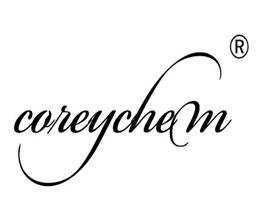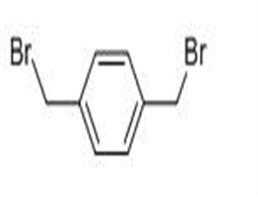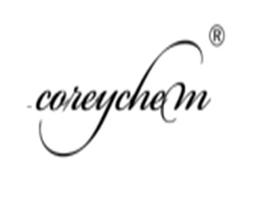
Stevioside
| Price | $100 |
| Package | 25KG |
| Min. Order: | 1KG |
| Supply Ability: | customise |
| Update Time: | 2019-07-06 |
Product Details
| Product Name: Stevioside | CAS No.: 87-89-8 |
| EC-No.: 201-781-2 | Min. Order: 1KG |
| Purity: 99% | Supply Ability: customise |
| Release date: 2019/07/06 | |
| Product Number:: WM0184 |
| Product Name: | Inositol |
| Synonyms: | HEXAHYDROCYCLOHEXANE;HEXAHYDROXYCYCLOHEXANE;HEXAHYDROXYCYCLOHEXANE INOSITOL;INOSITE;INOSITOL (MESO);INOSITOL, MYO-;INS;I-INOSITOL |
| CAS: | 87-89-8 |
| MF: | C6H12O6 |
| MW: | 180.16 |
| EINECS: | 201-781-2 |
| Product Categories: | MI;RECI;PHARMACEUTICALS;Food & Feed ADDITIVES;Miscellaneous;Biochemistry;Sugar Alcohols;Sugars;Vitamin Related Compounds;Vitamins;Nutritional fortification substances;Carbohydrates & Derivatives;Inositols;Vitamin;Inhibitors |
| Mol File: | 87-89-8.mol |
 |
|
| Inositol Chemical Properties |
| Melting point | 222-227 °C(lit.) |
| density | 1.75 |
| vapor density | 6.2 (vs air) |
| storage temp. | Store at RT. |
| solubility | H2O: 0.5 M at 20 °C, clear, colorless |
| form | Crystalline Powder |
| color | White |
| PH | 5-7 (100g/l, H2O, 20℃) |
| Water Solubility | 14 g/100 mL (25 ºC) |
| Merck | 14,4978 |
| BRN | 1907328 |
| Stability: | Stable. Combustible. Incompatible with strong oxidizing agents. |
| InChIKey | CDAISMWEOUEBRE-GPIVLXJGSA-N |
| CAS DataBase Reference | 87-89-8(CAS DataBase Reference) |
| NIST Chemistry Reference | Hexahydroxycyclohexane(87-89-8) |
| EPA Substance Registry System | myo-Inositol(87-89-8) |
| Safety Information |
| Safety Statements | 22-24/25 |
| WGK Germany | 2 |
| RTECS | NM7520800 |
| TSCA | Yes |
| HS Code | 29061390 |
| MSDS Information |
| Provider | Language |
|---|---|
| 1,2,3,4,5,6-Cyclohexanehexol | English |
| SigmaAldrich | English |
| ACROS | English |
| ALFA | English |
| Inositol Usage And Synthesis |
| Vitamin B class | Inositol belongs to the vitamins B class. Because of the different orientation of the relative ring plane of hydroxyl, it has a total of nine kinds of isomers, including 7 of non-optically active form, two kinds of optically active (L-form and D-form). In nature, it is widely distributed in all living tissues as either free or bound state, and is a common component presented in animal and plant cells. It can be synthesized by gastrointestinal microbes, being involved in carbohydrate and lipid metabolism in the body. It is mainly presented in the form of phosphatidylinositol in animal. It is most abundant in brain, heart and skeletal muscle. It is mainly in the form inositol phosphate in plants, and can bind with calcium, zinc and iron into insoluble compounds, which interfere with their digestion and absorption. Lack of inositol in daily diet can cause hair loss, and negatively affect development. Inositol is related to the intracellular calcium metabolism where its triphosphate derivative can be released from lipid conjugate after cell is stimulated, thus playing a role of secondary messenger. This process can mobilize the intracellular calcium pool to participate in regulation of many cellular events, e.g. secretion, metabolism, cell division, and light transmission. Inositol is often clinically used together with vitamin B complex, which can prevent or reduce the deposition of excess fat in the liver, and thus promoting the liver fat metabolism. This has a effect on reducing blood lipids, and removing the infiltration effect of the liver cells’ fat. It can be used for treatment of fatty liver, alcohol liver disease, atherosclerosis, high blood cholesterol, diabetes, alopecia, hyperlipidemia and so on. Its derivatives, such as phosphatidylinositol is one of the components of the cell membrane. Phytate (phytic acid) or phytin (phytin) often accumulated in seeds of higher plants. Phytic acid extracted from rice bran or bran can be used as food antioxidants, stabilizers and preservatives. Since the vast majority of animals and their gastrointestinal microbes can synthesize enough inositol, and food is abundant of inositol, so there are rare cases of inositol deficiency. Many kinds of fish and female gerbils cannot synthesize inositol (The testis tissue of male gerbil can synthesize inositol). Dietary phthaloyl Sulfathiazole can inhibit bacterial synthesis of inositol , which leads to rats’ deficiency of inositol, as follows: the content of free inositol in rat testis, liver, heart, kidney and plasma reduces; Hair loss and dermatitis happens; The content of triglycerides, cholesterol esters in liver increases; Both the size and number of lipid droplets increased significantly; There are also occurrence of fatty liver which can be healed by taking inositol; Moreover, the transport capacity of intestinal mucosal cell for the saturated fat cells decreases , and there is accumulation of intestinal fat. The performance of inositol deficiency for fish is as below: fins degeneration, edema, anemia, decreased gastric emptying rate, and decreased activity of cholinesterase and some transaminase. The above information is edited by the Chemicalbook of Dai Xiongfeng. |
| Identification test | Take 1 mL 2% sample solution to a porcelain evaporating dish, add 6ml nitric acid and evaporated to dryness on a water bath. The residue is dissolved with 1mL of water. Add 0.5 mL 10% strontium acetate solution and evaporate it to dryness on a steam bath again. It should display purple. |
| Content Analysis | Accurately weigh 200 mg sample (pre-dried at 105°C for 4h), and place it into a 250ml beaker. Add 5ml of a mixture between one sulfuric acid (TS-241) testing solution and 50 acetic anhydride, and then cover the watch glass. After heating on a steam bath for 20min, cool it on an ice bath, add 100ml water, and boil 20min. After cooling, transfer the sample into a 250 mL separating funnel using a small amount of water. Successively use 30, 25, 20, 15, 10 and 5 mL of chloroform to extract the solution for six times (first flush the beaker). All the chloroform extract was collected in a second 250m1 separating funnel. Wash the mixed extract with 10ml of water. Put the chloroform solution through a funnel cotton wool and transfer it to a 150ml pre-weighed Soxhlet flask. Use 10ml of chloroform to wash the separating funnel and the funnel, and incorporated into the extract. Evaporate it to dryness on a steam bath, and then transfer it in an oven at 105 °C for drying 1h. Cool it in a desiccator, and weigh it. Use the obtained amount of six inositol acetate multiply by 0.4167, namely the corresponding amount of inositol (C6H12O6). |
| Toxicity | GRAS (FDA, §182.5370, 2000). |
| Limited usage | No restrictions (FDA§184.1370,2000). GB 14880-94 states: infant food, fortified beverages 210~230mg/kg. GB 2760-2002: Juices (fruit) drinks, 60~120mg/kg. |
| Food additive; The maximum permitted amount; The maximum allowed amount of residual |  |
| Chemical Properties | White crystal or crystalline powder, odorless, and sweet; Relative density: 1.752 (anhydrous), 1.524(dihydrate), m.p. 225~227 ℃ (anhydrous), 218 °C (dihydrate), boiling point 319 °C. Dissolved in water (25 °C, 14g/100mL; 60 °C, 28g/100mL), slightly soluble in ethanol, acetic acid, ethylene glycol and glycerol, insoluble in ether, acetone and chloroform. Stable in air; Stable to heat, acid and alkali, but is hygroscopic. |
| Uses | 1. As food supplements, has a similar effect to vitamin B1. It can be used for infant foods and used in an amount of 210~250mg/kg; Used in drinking in an amount of 25~30mg/kg. 2. Inositol is an indispensible vitamin for lipid metabolism in the body. It can promote the absorption of hypolipidemic medicines and vitamins. Moreover, it can promote the cell growth and fat metabolism in liver and other tissues. It can be used for the adjuvant treatment of fatty liver, high cholesterol. It is widely used in food and feed additives, and is often added to fish, shrimp and livestock feed. The amount is 350-500mg/kg. 3. The product is one kind of the complex vitamin B, which can promote cell metabolism, improve the cell nutrient conditions, and can contribute to development, increase appetite, to recuperate. Moreover, it can prevent the accumulation of fat in the liver, and accelerate the process of removing excess fat in heart. It has a similar lipid-chemotactic action as choline, and therefore useful in the treatment of hepatic fatty excessive disease and cirrhosis of the liver disease. According to the "food fortifier use of health standards (1993)" (Issued by the Ministry of Health of China), it can be used for infant food and fortified beverages at an amount of 380-790mg/kg. It is a vitamin class medicines and lipid-lowering drug which promote the fat metabolism of liver and other tissues, and be useful for the adjuvant treatment of fatty liver and high cholesterol. It is widely used in additives of food and beverage. 4. Inositol is widely used in pharmaceutical, chemical, food, etc. It has a good effect on treating diseases such as liver cirrhosis. It can also used for advanced cosmetic raw materials, with high economic value. 5. It can be used as a biochemical reagent and also for the pharmaceutical and organic synthesis; It can lower the level cholesterol and have sedative effect. |
| Production method | 1. It is produced by the hydrolysis and the following neutralization of phytin. Add phytin and water into high-pressure hydrolysis pot, seal and heat until pressure gradually rise to around 0.5 MPa; stir for 8 h; check the pH value of the material which should be 2.5-3.0 as the end of the reaction. Add the hydrolyzed liquid into neutralized pot with the milk of lime for neutralization agent. Keep the temperature at 70-80 °C, and the pH value at 7-8. Use centrifuge to throw out filtrate. The Residue can be used for fertilizer (calcium phosphate). Heat the above filtrate to 80-90 °C, put 0.5-0.7% activated carbon, and stir continuously for about 20 min. Use sand core hold for suction filtration. The filtered supernatant is concentrated into condensed pot for condensation for 4-5h at 90 °C. The material can be taken out when the relative density reaches 1.24-1.28, then add enamel barrels or stainless steel barrel for cooling. When the crystal appears, artificially stir and cool to 20-25 °C, send into the centrifuge for drying and obtain the yellow crude product of inositol. Throw out the crude stock solution for another round of condensation and crystallization. Add water or line liquid to the crude product, dissolve it by heating, add active carbon for decoloration; Then add solution of barium oxide and ammonium oxalate to precipitate and remove the sulfate and calcium ions. Filter (when the mixture is still hot) and the filtrate was cooled to 30 °C, crystallize, filter (liquor apply), wash the filtered pellet with ethanol, dry at 80 °C for 6h, and finally go through 18 mesh sieve to obtain inositol. 2. Production Method (1) Sock 1 part of bran meal and 10 parts of water into the immersion pool, Use hydrochloric acid or sulfuric acid to adjust pH till 2.5-3.0, then soak 4-8h at room temperature (longer for winter, shorter for summer). In this case, the insoluble potassium, calcium and magnesium complex salts of plant acid in bran meal are converted into soluble complex salts. Filter and wash the residue with water. The residues can be used for feed. Mix the filtrate and washings and stir using compressed air, then add fresh lime milk to neutralize till pH 6.8. The neutralized mixture was allowed to stand for 2h for thoroughly calcium phytate precipitation. Suck out the supernatant in the upper layer, add clean water to wash repeatedly until washing liquid does not exhibit light yellow (neutral). Apply filter press to filter the lower layer of white slurry to obtain pasty-calcium phytic acid namely phytin. Pour paste phytin and water into high pressure hydrolysis pot for mashing. The concentration should be kept at 25%, and heated to an internal pressure 0.5 MPa, Stirring reaction should be kept for 8h with the pH 2.5-3.0. Add hydrolysis solution into neutralization pot, and neutralize at 70-80 °C with lime milk to pH 7-8. Filter and remove the residue which can be used for fertilizer. Adding catalyst can reduce the reaction temperature and shorten the reaction time. Heat the hydrolysis solution to 80-90 °C, add 0.5%-0.7% of activated carbon, filter after decoloration. Condense the filtrate for 4-5 hour at 90 °C. Take the materials out when the relative density reaches 1.24-1.28. Cool it to 20-25 °C and crystallize to isolate the yellow inositol crude. Condense and crystallize the filtrate again. Heat the crude product and dissolve in water. Add active carbon for decolorization. Add barium hydroxide solution and ammonium oxalate solution to precipitate and remove the sulfate and calcium ions. Filter (when the mixture is still hot) and the filtrate was cooled to 30 °C, crystallize, filter (liquor apply), wash the filtered pellet with ethanol, dry at 80 °C for 6h, and finally go through 18 mesh sieve to obtain inositol. (2) Use the bran as raw material. Soaked it at 30 °C using 1%-1.5% hydrochloric acid for 4-8h, filter it through a plate and frame filter press. Soak the residue for 2 times and neutralize the filtrate with milk of lime until PH value = 7, stir thoroughly for 10min, filter, wash to get the crude product of phytate. The crude product is then dissolved in hydrochloric acid solution (pH = 1-2) and subject to decoloration and filter by activated carbon. Adjust the pH filtrate to pH= 4.5 using 10% Na2CO3 solution stir for 10min, stand for 1-1.5h. Discard the upper layer of supernatant. Place the slurry of calcium phytic acid into a pressure cooker with the subsequent process the same as above. |
| Chemical Properties | white powder |
| Uses | The structural basis for a number of signaling and secondary messenger molecules including; insulin signal transduction, cytoskeleton assembly, nerve guidance, membrane potentials, serotonin activity and the breaking down of fats and reducing cholesterol. |
| Uses | lipotropic agent |
| Uses | A growth-factor and structural element of secondary messengers in eukaryotic cells |
| Definition | ChEBI: An inositol having myo- configuration. |
| Inositol Preparation Products And Raw materials |
| Preparation Products | Phytic acid-->A-MELANOCYTE STIMULATING HORMONE SYNTHETIC |
| Raw materials | Barium hydroxide -->Calcium phosphate-->BARIUM OXIDE-->Calcium phytate -->Filter press-->Cyclohexane-1,2,3,4,5,6-hexol-->Perylene |
Company Profile Introduction
Established in 2014,Career Henan Chemical Co. is a manufacturerspecializing in the sale of fine chemicals.
Mainly deals in the sales of:
Pharmaceutical intermediates
OLED intermediates:
Pharmaceutical intermediates;
OLED intermediates;
You may like
Recommended supplier
| Product name | Price | Suppliers | Update time | |
|---|---|---|---|---|
| $46.00/500mg |
VIP1Y
|
TargetMol Chemicals Inc.
|
2024-11-19 | |
| $46.00/500mg |
VIP5Y
|
TargetMol Chemicals Inc.
|
2024-11-19 | |
| $10.00/25kg |
VIP6Y
|
Hebei Weibang Biotechnology Co., Ltd
|
2024-11-01 | |
| $5.00/1kg |
VIP3Y
|
Hebei Fengjia New Material Co., Ltd
|
2024-09-11 | |
| $10.00/1kg |
VIP4Y
|
Hebei Chuanghai Biotechnology Co,.LTD
|
2024-08-20 | |
| $999.00/5ton |
VIP1Y
|
HEBEI SHENGSUAN CHEMICAL INDUSTRY CO.,LTD
|
2024-08-09 | |
| $6.00/1kg |
VIP1Y
|
HebeiShuoshengImportandExportco.,Ltd
|
2024-08-07 | |
| $0.00/1kg |
VIP1Y
|
Watson Biotechnology Co.,Ltd
|
2024-07-29 | |
| $8.90/1kg |
VIP1Y
|
Shandong Deshang Chemical Co., Ltd.
|
2024-06-27 | |
| $6.00/1KG |
VIP1Y
|
Hebei Saisier Technology Co., LTD
|
2024-06-14 |
- Since: 2014-12-17
- Address: No.967,15th Floor,Unit 7, Building 1, No.70 of DianChang Road, High-tech Development Zone, Zhengzho
INQUIRY
杨俊青
sales@coreychem.com
sales@coreychem.com









 China
China